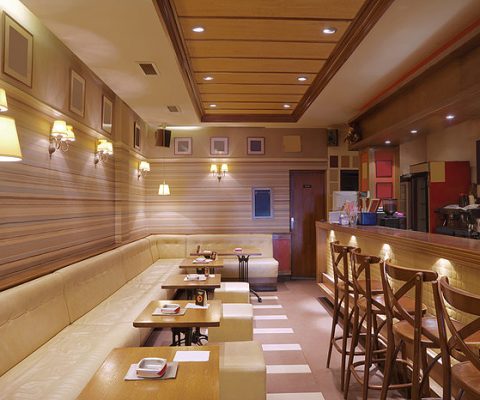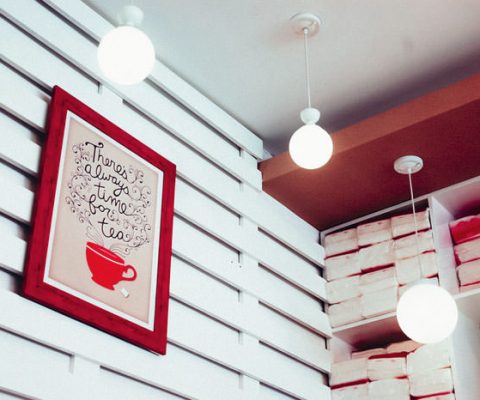CONSTRUCTION / TECHNICAL ASPECTS
Cracks in buildings
Problem no.1: diagonal cracks in brick walls (wide at top and narrow at bottom)
Causes
Differential settlement of foundation.
Shrinkage of clayey soil below foundation (in case foundation is resting on clayey soil). This sometimes happens from the absorption of moisture by the tree roots in the vicinity.
Structural over load.
Remedies/precautions
Building should be constructed over soil strata having uniform characteristics.
![]() Take precautions as mentioned in 2nd category of cracks in case the building is founded on clayey soil.
Take precautions as mentioned in 2nd category of cracks in case the building is founded on clayey soil.
![]() Avoid constructing walls on filled up soil. If it can’t be avoided then ensure that filled up soil is compacted uniformly at O.M.C. (Optimum Moisture content) throughout.
Avoid constructing walls on filled up soil. If it can’t be avoided then ensure that filled up soil is compacted uniformly at O.M.C. (Optimum Moisture content) throughout.
Masonry work shall be preceded symmetrically and uniformly at all levels.
Avoid over loading.
Problem no.2: diagonal cracks in a wall (wide at bottom and narrow at top)
Causes
Differential settlement in foundation due to expansion of clayey soil by absorption of moisture. This may happen when the rain water finds entry in soil or if a tree is cut suddenly in the vicinity of structure so that the soil which was earlier dehydrated by the tree again absorbs moisture and swells.
Remedies
In clayey soil, foundation should be taken as much as deep so as to minimize the effect of moisture entry as much as possible.
Adequate plinth protection and drainage arrangement should be made around the building to minimize water entry in the foundation.
![]() If from any site intended for new construction, some vegetation is removed, don’t commence construction activity immediately especially if soil is clay. Allow the soil to absorb moisture, swell and stabilize.
If from any site intended for new construction, some vegetation is removed, don’t commence construction activity immediately especially if soil is clay. Allow the soil to absorb moisture, swell and stabilize.
Problem no.3: random cracking in flooring.
Causes
Flooring has been cast continuously without making panels. Cracks occur due to development of tensile stresses on account of shrinkage and thermal contraction of concrete and occur mostly in the first dry spell.
Precautions
Cast flooring in panels.
Do adequate curing in the initial period of hardening of concrete.
NOTE: – Sometimes on the top of concrete surface, hair cracks in the form of fine superficial cracking are observed which is also known as crazing. These hair cracks are partly due to the unequal shrinkage of the surface concrete and the mass behind it. Surface cracks are also caused by surface dressing with a mortar too rich in cement, too much water, insufficient curing or form over-trowelling. Such hair cracks don’t affect the strength of the concrete. One method of avoiding such hair cracks is to remove the surface skin of the concrete by brushing it with a stiff brush soon after setting. Delayed finishing and final floating of concrete, upto a certain limit, avoids surface cracks.
Problem no.4: horizontal cracks in brick mortar joints.
Causes
Weakening of mortar due to sulphate attack. These cracks normally occur after 2-3 years of construction as the reaction is slow.
Remedies/precautions
Sulphate contents of the bricks should be checked before allowing their use.
Bricks walls should not be allowed to be damp because sulphate attack happens only in presence of moisture.
The correct remedy is to reconstruct the affected areas.
Problem no.5: vertical cracks in long compound wall or retaining wall of masonry at certain intervals.
Causes
Due to not leaving expansion/contraction joints at proper intervals. In cold weather when the wall tends to contract due to temperature drop but being not allowed to contract freely, it develops tensile stress and when the tensile stress exceeds the strength, the wall cracks. Similarly, in hot weather wall tends to expend and if expansion is not allowed to occur freely, compressive stresses will develop in the wall and when they exceed the strength, wall will break.
Precautions
Leave expansion/contraction joints at regular interval specially in long stretches of wall.
Problem no: . 6: vertical cracks in long compound wall or retaining wall of masonry at certain intervals
Causes
Due to not leaving expansion/contraction joints at proper intervals. In cold weather when the wall tends to contract due to temperature drop but being not allowed to contract freely, it develops tensile stress and when the tensile stress exceeds the strength, the wall cracks. Similarly, in hot weather wall tends to expand and if expansion is not allowed to occur freely, compressive stresses will develop in the wall and when they exceed the strength, wall will break.
Precautions
Leave expansion/contraction joints at regular interval especially in long stretches of wall.
Problem no.6: cracks in load bearing masonry wall below r.c.c. slab.
Causes
Due to absence of slip joint between R.C.C. slab and wall which doesn’t allow R.C.C. slab to move freely over wall leads to cracking in the wall. Sometimes the movement of the slab may also cause cracking in masonry at lintel and window sill level because here the masonry is weak. These cracks are observed mainly on the top most storey of the building because roof is more exposed to temperature variation.
Remedies
Before casting RCC slab over brick wall, smooth bearing plaster should be done over brick walls coupled with white wash/bitumen coating/kraft or tarred paper over it. It allows slab to move freely over wall due to thermal expansion/contraction/shrinkage.


